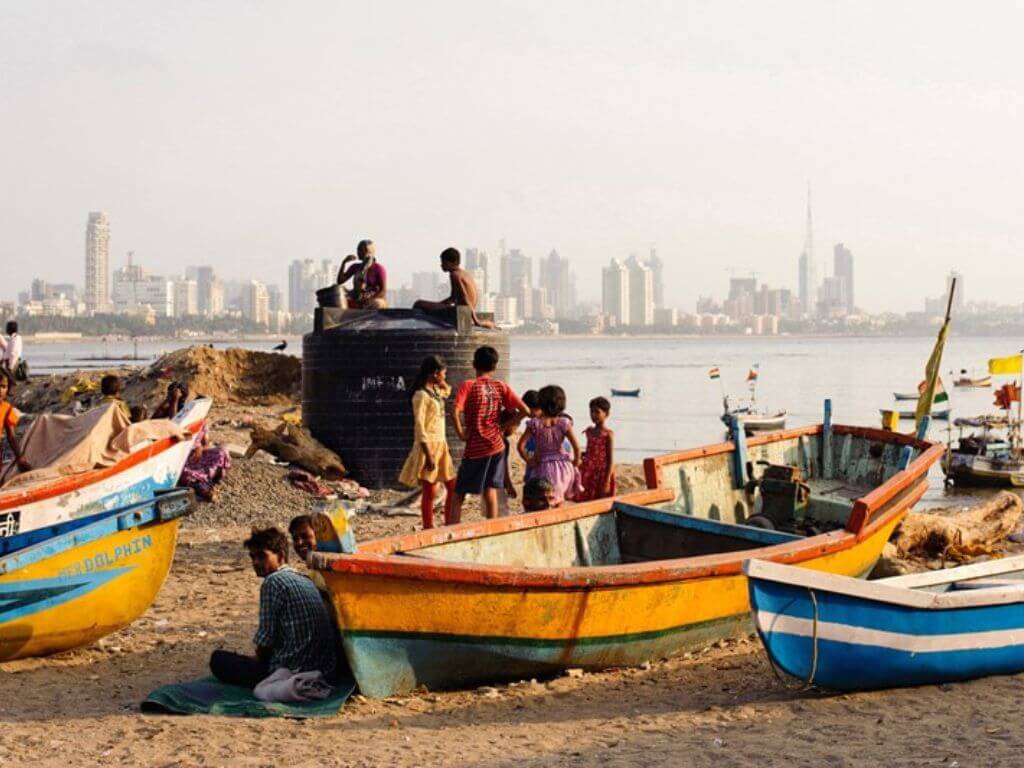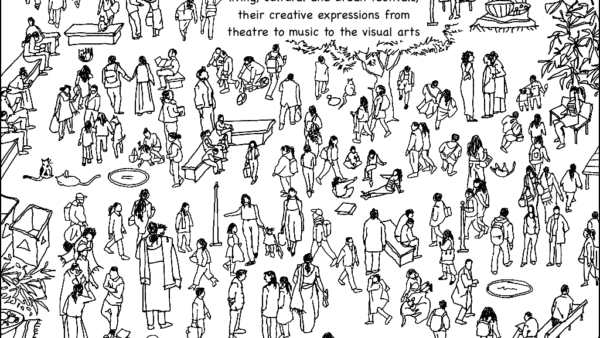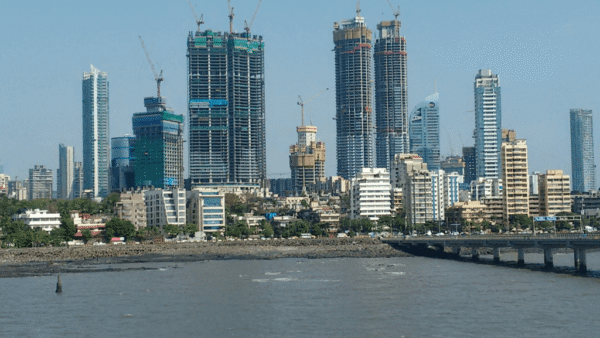Since redevelopment of slums, chawls, old and cessed buildings was introduced, Mumbai has seen its skyline transform with pencil-thin towers situated cheek-by-jowl in most areas across the city. Redevelopment as a measure to provide people in informal settlements and old buildings with habitable and dignified living, at minimal or free of cost, has not quite turned out as it was envisaged. It was not probably designed to. What it has done over these decades is decrease the state’s involvement and facilitated the rise of the builder class.
“The idea of redevelopment was to convert a home into a house…the house became a commodity to transact. Redevelopment was not about housing, it was about real-estate creation for developers,” explains urbanist Prasad Shetty, also the founder and teacher at the School of Environment and Architecture (SEA). Shetty, who studied building typologies of Mumbai – the city has over twenty – believes that redevelopment took a blanket approach to turn many chawls and informal settlements into high-rise apartments. He cautions that not much can be done now unless the Development Control Regulations (DCR) 1991 are replaced but the political economy will not allow it. Shetty spoke to Question of Cities about a range of issues related to redevelopment.
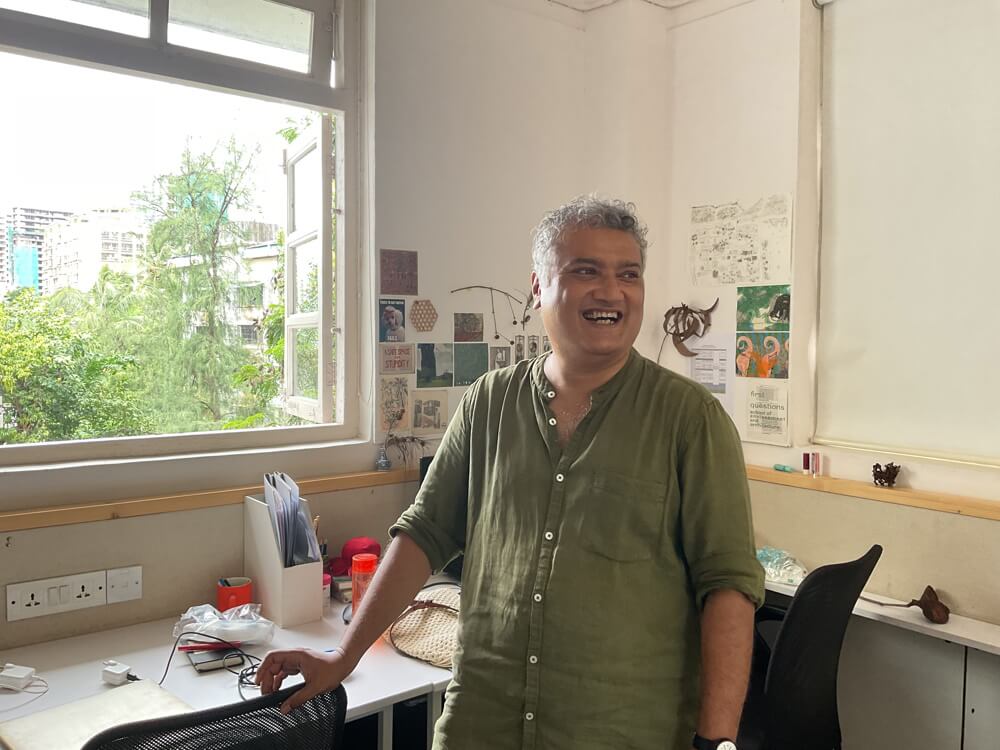
Urbanist Prasad Shetty teaches at SEA and is a partner at Bard Studio, Mumbai. Photo: Jashvitha Dhagey
How do you see and understand redevelopment in Mumbai?
The idea of redevelopment is not new to cities. A series of incremental redevelopment has constantly reproduced, altered and layered over existing structures. The idea of redevelopment has been more regulatory in recent years and comes from Regulation 33 of Development Control Regulations 1991 on redeveloping slums, chawls, old MHADA layouts, cooperative housing society buildings and other dilapidated buildings by pulling down existing structures and building new ones. It hinged on providing an additional Floor Space Index (FSI) as an incentive to builders.
After 30 years of this form of redevelopment, nearly 45 percent of the people are still in slums and a substantial number in chawls. Even if it has solved some problems, no serious analysis has been done. There are many issues about life in redeveloped housing: the houses are uninhabitable. The idea of redevelopment was to convert a home into a house but a home is a lot of other things – the neighbourhood, networks and more. The government did this without spending its money because developers and contractors were involved. The house became a commodity to transact. Redevelopment was not about housing – it was about real-estate creation for developers.
Could you explain how the Development Plan (DP) and Development Control Regulations (DCR) have determined redevelopment?
The DP and DCRs provide the framework for all developments including redevelopments. Currently, while these are completely oriented towards providing incentives to developers for pulling down old structures and making new ones, there aren’t incentives or provisions for repair and retrofitting by city inhabitants. Also, at this moment, I don’t know whether Mumbai can have a radically different DCR. The political economy won’t allow for this. This is the reason why the DCR 2034 appears to be upgraded DCR 1991 without substantial changes — it has provided FSI to everybody who wanted it.
The Slum Rehabilitation Authority and MHADA numbers do not show a substantial change. It’s not as if slums were reduced by half or 70 percent were cleared or anything radical like that. Builders are naturally interested in areas with high real estate value. For example, slums in Mankhurd and Govandi don’t get redeveloped, they become rehabilitation complexes because this Floor Space Index (FSI) can be transferred to other places through Transferable Development Rights (TDR). Redevelopment has favoured developers but I would go a step further to say it has favoured the building industry as a whole.
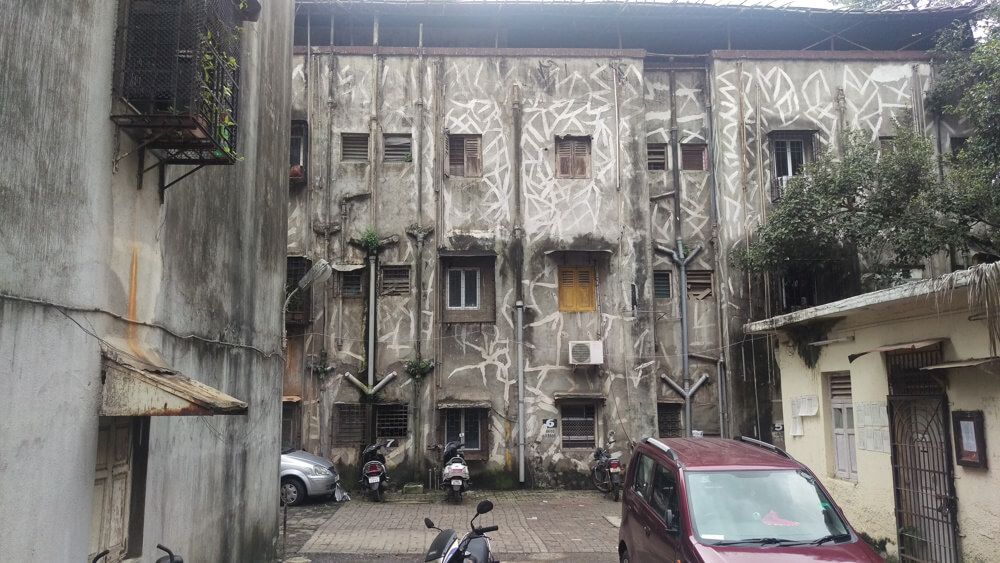
Photo: Shivani Dave
Would you say that the largest share of the real estate market now is redeveloped buildings and this redevelopment was random in that it did not consider the impact on the locality and amenities?
Since land is constrained in the city, and real estate is the key economic generator, redevelopment of existing built-form towards intensification and increase of built-up area is the dominant activity in the real-estate market of Mumbai. However, the numbers and experiences do not show that the redevelopment projects have done good for the city. There is a move towards making self-contained apartments for nuclear families but family structures have changed, among other things. These houses are now a product that’s easy to buy, sell, raise a mortgage on, inherit, even demolish. It is an easy commodity to transact with, it’s convenient for everybody, and there is clear money made.
Who are the stakeholders? Developers are not the key stakeholders; they are a part of it. For architects and designers, the client is not the developer but people who build it and are affected by it; the client is not limited to the people who pay. You bear the custodianship of the environment and culture and, therefore, you need to think through when you build, because you are affecting people’s lives for generations to come. The quality of redeveloped habitation and buildings are extremely poor and will soon create a crisis, which will not be solvable through additional FSI.
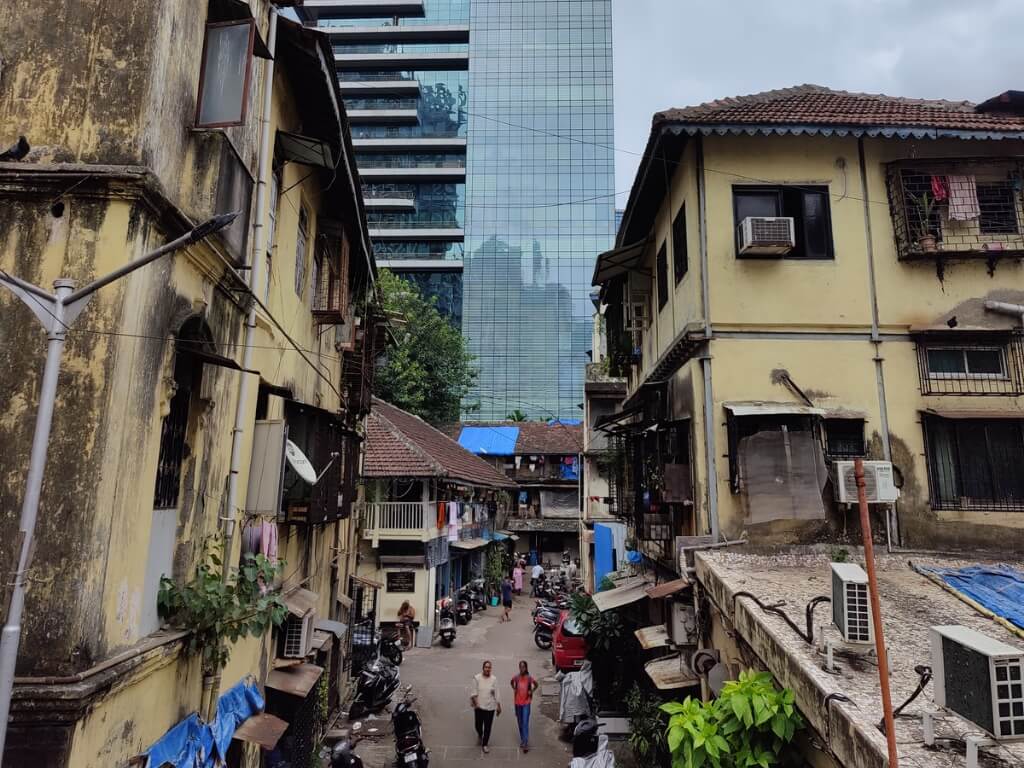
Photo: Shivani Dave
Redevelopment should also be about social and environmental equity, isn’t it?
The DP and DCR appear to have forgotten the basic principles of planning – equity and social justice. Government policies, socialist in a sense, want to provide for the poor but maintain the status quo so that the rich will not lose. The dependence on developers and the rich buying class is extremely high. So, the redevelopment policy has not been equitable at all. They try to be inclusive but “inclusive” is not “equitable”. Besides, they aren’t really inclusive because the government is funded by the rich. The business class is very close to the political class; its interest is the government’s interest.
We need to focus on equitable access and what this means in redevelopment. Why do some people have access to good hospitals when others don’t, why are some travelling comfortably and others not, why are some living in good quality houses and others not? We have to ask these equity questions seriously. We need to also ask questions around Mumbai’s emerging demography and economy. Where is the city going to be in the next 20 years, what is the nature of families and family structures, what is the nature of people’s work? The disparity between the rich and poor is now very high. If we focus on equity and emerging demography, we can then move to resource allocation. Planning is not only building more roads or buildings. Planning, in modern democratic socialist societies, is efficient and equitable allocation of resources. Equity and efficiency are the two pillars of planning.
In a report you co-authored on housing types, Mumbai has almost 20-25 different types of houses but redevelopment has yielded only the high-rises. Were different typologies possible?
The different housing types of Mumbai responded to different economies and cultural conditions of the city. But currently we have only one type of house form that gets built – the high-rise apartment. More than 90 percent of people in this country do not get architectural services by trained architects. We need to figure out a way in which architects, designers, and planners can enter the field. The problem, to me, is that you spend five years getting an expensive education like Bachelor of Architecture but you can’t work with slum dwellers because you are neither taught the framework nor is there a market model for it. What does retrofit of one house in a slum even mean? What changes can you bring that they haven’t done for themselves?
In Dharavi, for instance, there has been a redevelopment plan for years but this time they are being quite aggressive and brutal, I think. The government has been favourable; to me, it’s like a land scam. However, Dharavi has survived lots of things – it built this city, it runs the city, and it contributes in big ways that we can’t fathom. Maybe a brutal approach can bring change but it’s not going to be easy; there’s going to be a lot of bloodshed of a different kind because this redevelopment is erasing certain things. You don’t always have to destroy to build.
Large infrastructure projects like the coastal road or Navi Mumbai airport have ecologically unsound plans. How would you place such projects in the development-redevelopment framework?
Large projects across the world have always had controversies around them. I’m not completely convinced about the environmental arguments made by either side. There is a commodification of the environment on both sides. The discourse of the environment was historically mobilised in the 1970s by tribals who were losing land to deforestation which means it was a claim on resources. Over time, the argument became about saving nature, reducing carbon, building green buildings, and so on. Environment is not a static entity — it never was. Climate Change is happening but you cannot say it is because somebody is building a bridge here; it’s a much larger phenomenon. We filled up islands to make Mumbai where we all live, now we talk about saving the environment. Isn’t that hypocritical?
Environmental discourse is mobilised by society to claim things, and it has been mobilised by the powerful and non-powerful for the same reasons – to claim resources. All of this happens in the name of saving the environment. What does ‘saving the environment’ really mean when you are a part of it? Environment is a political question, about claims and resources, of equity through claims.
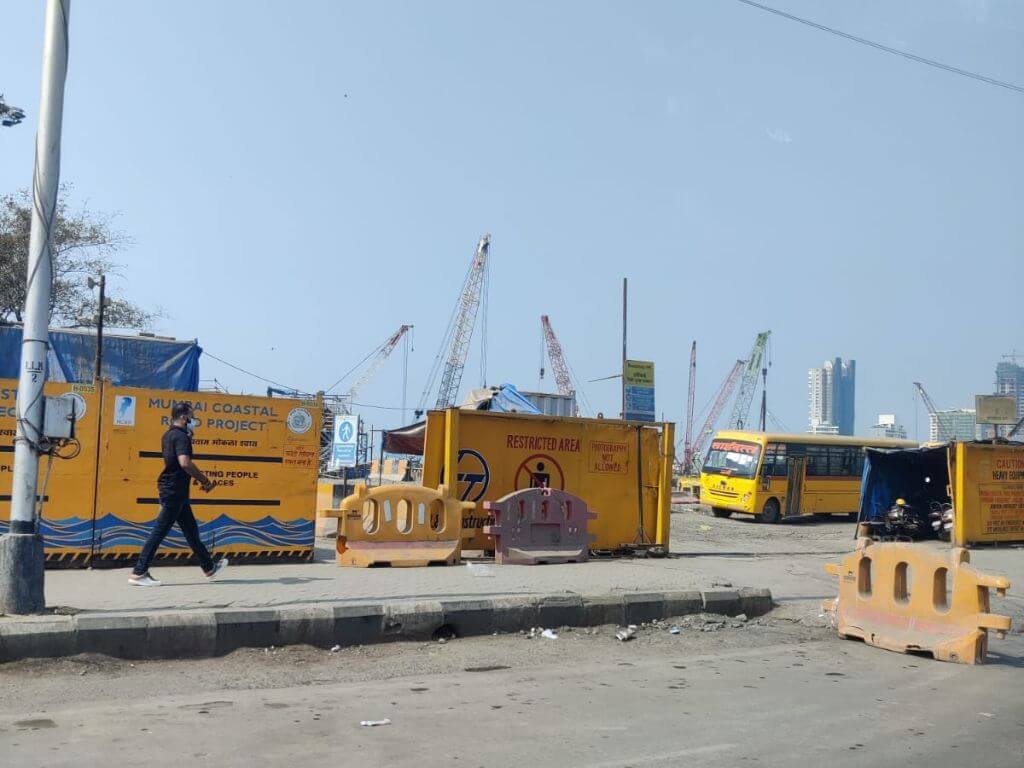
Photo: Jashvitha Dhagey
From this standpoint, how do you assess Mumbai’s beaches and loss of Koliwadas?
Fishing villages are not static entities either. The next generation of Kolis in Mumbai have their own aspirations. Today, Koliwadas are about cheap rental accommodation, so more houses are being built to be leased. Mumbai used to have more than 80 fishing villages, now there are about eight. Fishing in urban areas is industrialised. The idea of the romantic fishing village is in our heads.
The problem with the coastal road really is that we are losing access to the sea. People are saying they want to save fishing villages, save the environment, etc. We don’t even have a language in design to say that something important like the access to sea is lost. This is because the techno-legal framework does not understand phenomenon as an unquantifiable visceral experience. It is not possible for anyone to quantify the loss of sea as an experiential loss. And since most battles are resolved in courts, there won’t be a possibility to win the sea back.
Would you suggest that the state government or Brihanmumbai Municipal Corporation take on more responsibility, and reduce the role of private builders, so that redeveloped housing is more equitable and affordable?
There is no evidence that developers are doing housing for the poor; they are not making housing, they are making real estate. There is a decrease in the state’s involvement; it moved away from housing to large infrastructure. To improve, maybe the state has to be more directly involved but when this happens, it brings about many anomalies. Our habit is to give housing without infrastructure in this country and city, without making schools, hospitals, transportation and so on. This is not housing. I don’t think the state has ever been sincere about housing in its entirety. People have been struggling and doing things for themselves. After the site and services schemes of the late 1980s, the state’s sincerity has taken a backseat. In the current political economy, I don’t think the state will get involved, it might not even have the capacity. The BMC is a matured system but it has been kept aside and strangled by interventions of other state agencies. It has not been allowed to work, so to speak.
Considering how redevelopment has increased densities without corresponding rise in amenities, what is the way ahead? What can be done to restore some sanity to the redevelopment process?
We are in a spiral from where a return is not possible. Maybe when the economy changes, the density will stabilise and decrease in some high-dense areas. However, it will be difficult for infrastructure to catch up there. Currently, planners cannot do anything other than suggesting demolishing and rebuilding. Stabilising is not possible unless there is a broad economic and demographic shift, particularly in the denser areas of Mumbai.
What next? Mumbai is a very powerful and robust city, bigger than most cities in the world. Like all cities, Mumbai will have a growth spurt which comes down, stabilises, and plays out its course. Cities are not produced because somebody makes them; cities don’t die because somebody kills them — they happen on their own.
Shivani Dave is an architect, writer and illustrator interested in exploring the intersection of architecture and social sciences. After graduating in architecture from Mumbai, and in media from the London School of Journalism, she is applying the fundamentals of architectural research and writing within urban contexts to develop phenomenological ideas about life in cities.
Cover photo: Creative Commons

